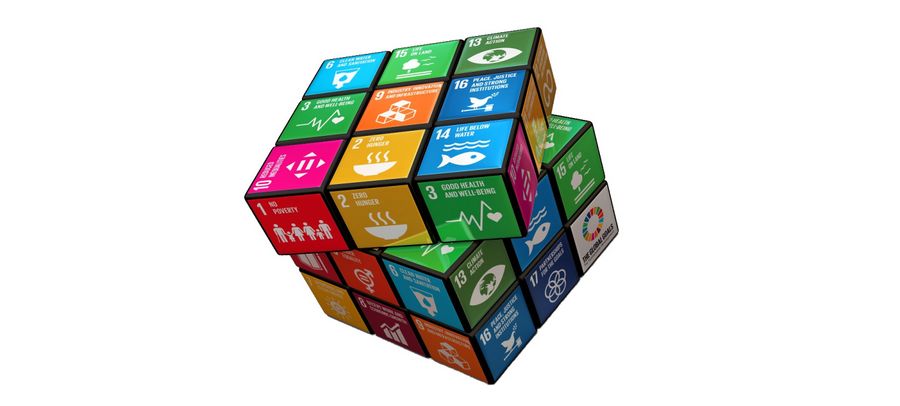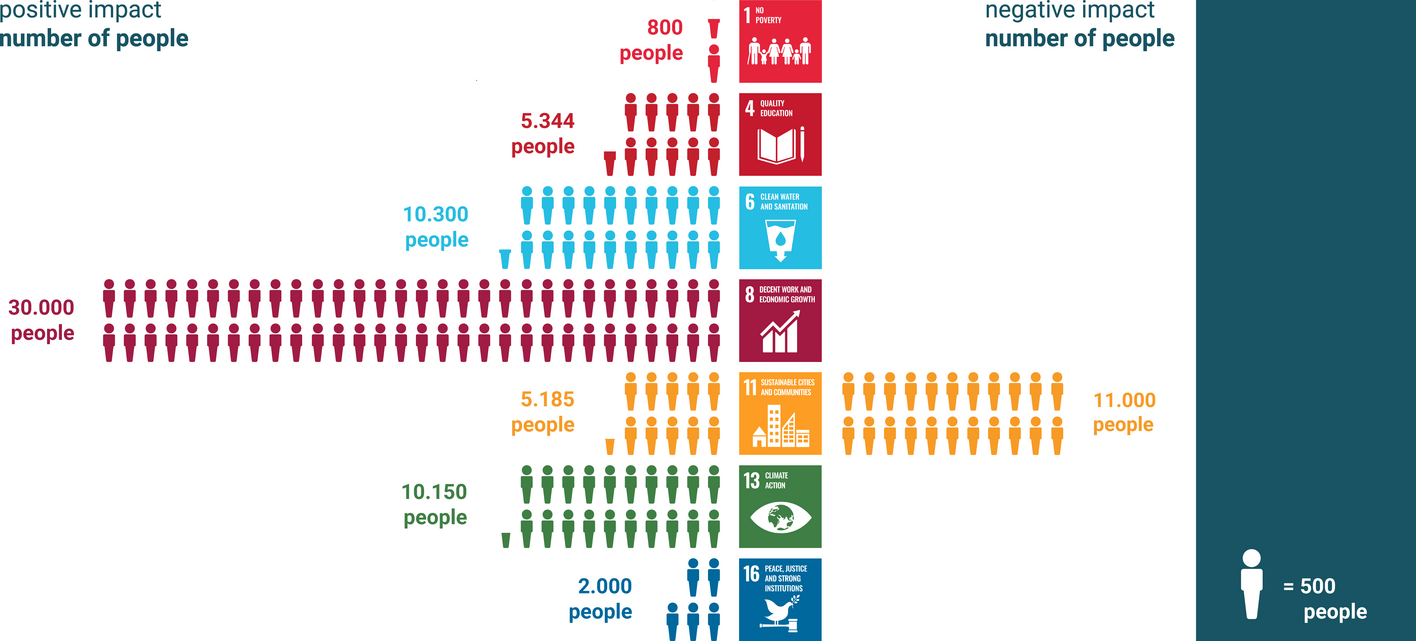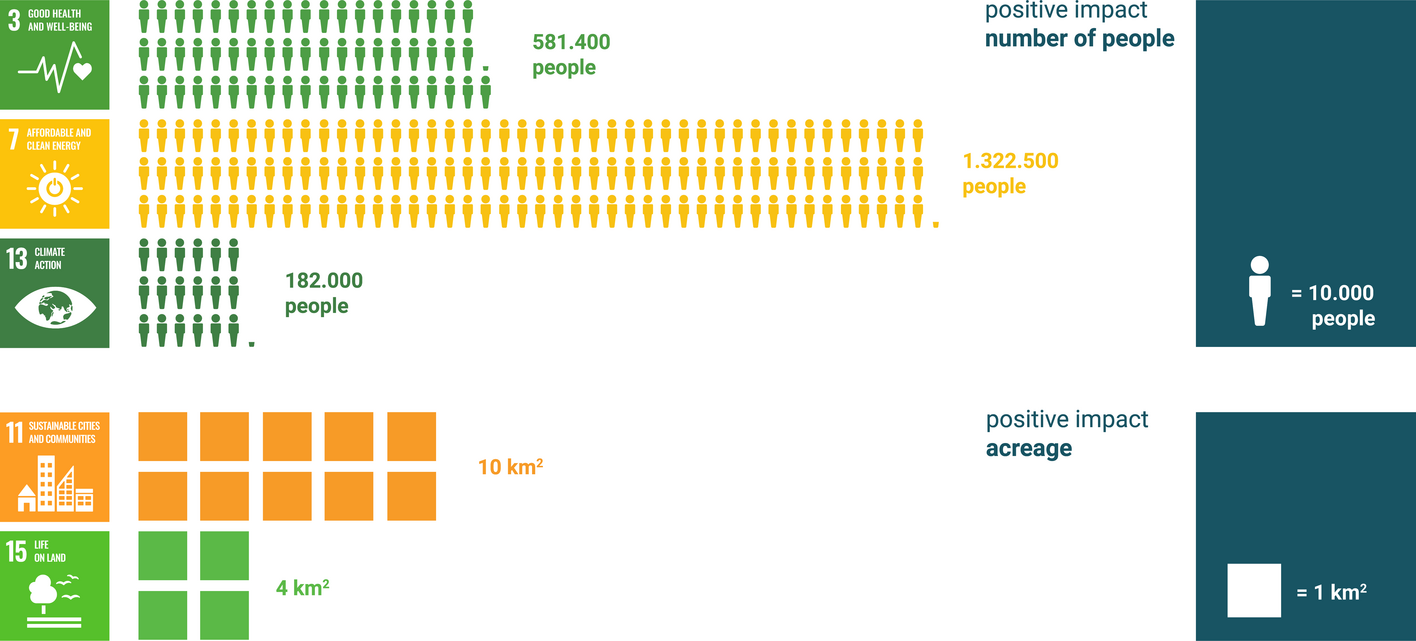Measuring societal impact
Witteveen+Bos wants to contribute to the seventeen Sustainable Development Goals (SDGs) of the United Nations (UN) and help achieve a socially, environmentally and economically sustainable world by 2030. In relation to various aspects of our work, we can make a difference by choosing the most impactful projects and determining the best solutions with the most positive societal impact.
To enable us to decide which projects represent the best opportunities to contribute, we have developed two tools – based on the ‘societal cost-benefit analysis’ methodology – that allow us to measure the impact of our projects. These tools were developed and tested in recent years, and in 2021 we aim to introduce them across Witteveen+Bos and assess more projects. In time, we will also be able to expand our KPIs for this corporate objective.
Impact with the SDG Impact Tool
In 2019 we developed the SDG Impact Tool for use in developing countries (those included in the OECD’s DAC list).
The projects we completed in developing countries in 2020 were assessed using the SDG Impact Tool. Most of these projects took place in Indonesia. In total, we reviewed nine design assignments and two feasibility studies. Our analysis shows that our qualitative impact in 2020 was mainly in relation to SDG 4 (quality education), SDG 8 (decent work and economic growth) and SDG 12 (responsible consumption and production). We also see a positive impact on CO2 emissions (SDG 13: climate action).
The assessed projects also had negative impacts. Increased access to an island thanks to a new road network, for example, means the 11,000 inhabitants of the area may now be disturbed by the noise of motorised traffic.
The development of a commercial area in the Indonesian city of Manado has both positive and negative effects. The positive impact is that people gain access to clean water, employment and protection against climate extremes. The negative impact is that part of the coast and a forest area will be affected by the development.
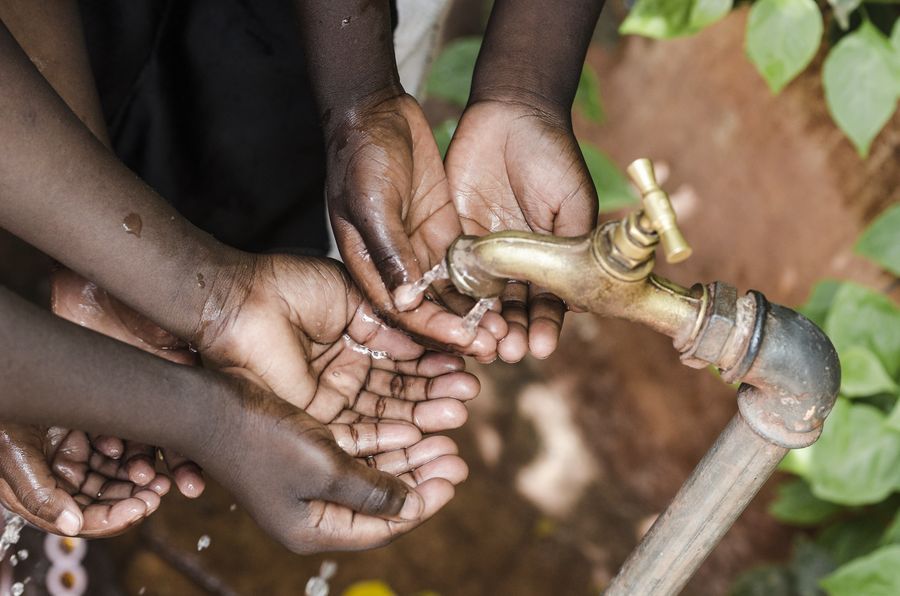
Impact on people - result 11 projects
Impact with the Societal Value Tool
In 2020 we developed a tool for non-developing countries based on the same methodology: the Societal Value Tool. In 2020, as part of a pilot, we used this tool to assess a limited number (23) of projects following their completion. Our ambition is to ultimately offer insight into the societal value and SDG contribution of our entire project portfolio.
The difference between the tools lies in the starting point. As part of a drinking water project in developing countries, for example, we identify the number of people who have gained access to clean drinking water. In non-developing countries, we assume that people already have access to clean drinking water. With the Societal Value Tool, therefore, we look at other water indicators, such as the reduction of water usage or groundwater extraction in the project area.
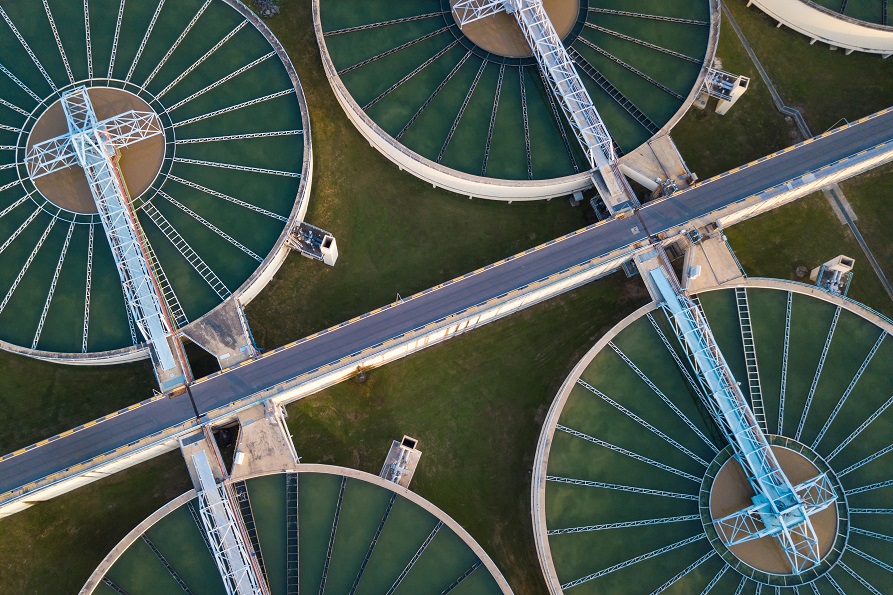
Impact on people and the environment - result 23 projects
In our methodology, we distinguished between the types of project we worked on. These projects were then analysed both qualitatively and quantitatively. There are certain things we would like to be able to measure but, at this stage, that cannot be done to a satisfactory degree.
